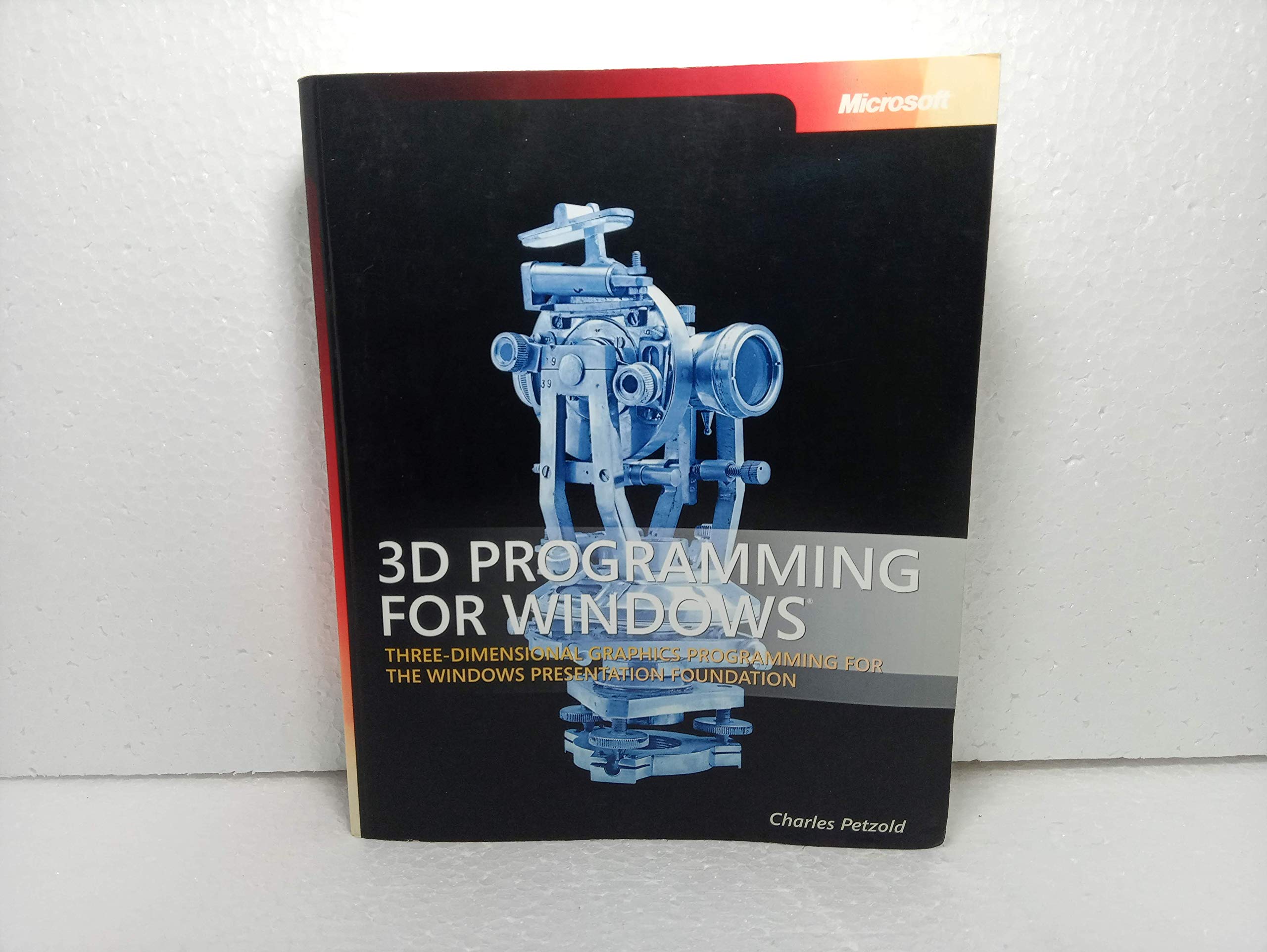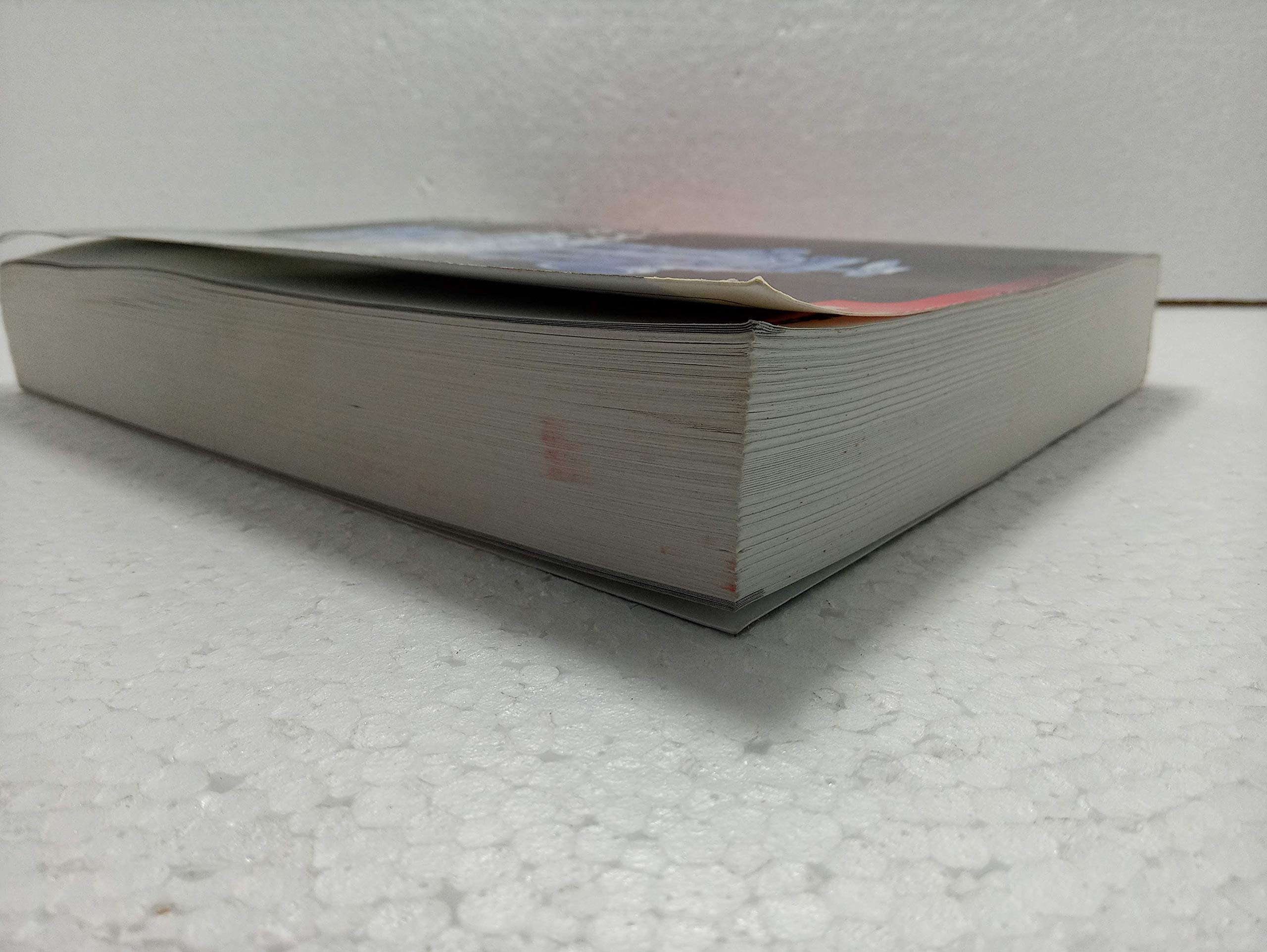معلومات عنا
حقوق الطبع والنشر © 2024 Desertcart Holdings Limited
Desert Online General Trading LLC
Dubai, United Arab Emirates




Full description not available
A**N
The book is fine, I just don't like the technology - you ...
The book is fine, I just don't like the technology - you have to beat yourself to death to draw something in 3-D using the WPF 3-D classes. If anything, the book convinced me to stay away from these classes even though I love WPF otherwise. There are a couple of things I dislike about the technology: 1) it is a lot of work to form all of the elements to draw an object because of all of the arrays you have to fill, 2) fundamentally, I do not like the concept of something in 3-space having to be a triangle, because I can draw a 3-D line w/o having to form a triangle. I have my own 3-D graphic library using GRI+ and a second one using WPF drawing class, both of which can draw 3-D lines which simply have two point coordinates to define them. This author, is a great writer.
R**.
3D here and now.
Mr. Petzold breaks down 3D development into simplest terms fluidly and at a pleasing tempo that will impress. The material presentation addresses generalities (basic considerations) when developing 3D models programmatically providing deep insight into what goes on in the background of a 3D application. The document structure is project based and progressively develops upon previous lessons at a rate that is best described as casual or low stress.The projects emphasize .Net Framework implementations, but the ideologies and terminologies are industry standard and most all Windows users already have the .Net Framework installed anyway - might as well use it for something. There is an application titled Kazaml that compliments the book and its project format nicely; the application has, among several other things, a code editor and real-time updated view-port that allows you to see your progress in real-time. Kazaml is freeware ($0.00) and works out of the box with the .Net Framework - it has been discontinued, but the last version is still available and works well with the newest .Net Framework version 4.x.Ol' Charles is an established Windows Developer and writer for Microsoft Press dtaing back some 20 years now. This guy should know his stuff and generally does and anyone looking to break into 3D development or wants to take their modelling to the next level this book is for you - bar none. although this title has aged a bit the data is still pertinent with the newer .Net framework implementations so fear naught.
J**N
A great book for learning 3D from an API that abstracts all the non-3D details
A great book for learning 3D from an API that abstracts all the non-3D details.Whilst XPF 3D has serious performance issues (point collections are immutable, retained mode graphics, lack of support beyond HLSL 1.0 - no vertex or geometry shaders), it is still the easiest, highest level abstraction for 3D development. This book shows you how, and walks you through the concepts and limitations of WPF 3D.With the WPF team and now the Silverlight team on life support, Does WPF 3D have a future? As far as I am aware, there hasnt been a major change to WPF 3D since .NET 3.51 D3DImage control was introduced. Silverlight / XNA SharedGraphicsDeviceManager seems to now be the recomended approach to integrating 3D in LOB applications, (oops, now SL & XNA are dead too, so use D3DImage in WPF or SurfaceImageSource in Win8 XAML for DirectX interop) but for learning 3D programming in general, this WPF 3D book is great.
M**E
A must have 3D programming reverence
The Petzold books are some of the best for C++ and C# and WPF programming. The drawback to the approach Petzold uses is that one must still invest in another book or two by another author to get the full picture. Petzold for good reason works from the basics and does not use the Visual Studio wizards for the most part. It is important to know both however when developing code. But even so, this is an excellent reference book that has helped me immensely in learning and using C#, WPF and XAML.
R**B
Great Book
Every time I read one of Mr. Petzold's books, I'm impressed and pleased with the experience. Not only do all of his examples work, but the background information is relevant and useful in other areas of my development. I'm particularly pleased with the chapters on matrix transforms and quaternions. He does a great job of explaining this complicated mathematics.
E**Y
An excellent and practical introduction to WPF 3D
First, maybe it's worth mentioning that unlike most other books on 3D out there, it concentrates solely on WPF 3D, right from the beginning, and it assumes you have enough knowledge of C# .net/WPF. It doesn't "waste" half of the book trying to teach you C#/Visual Studio/XAML etc... it's a very good attitude. If you need to learn WPF/C#, read another book first. Charles Petzold has a great book on WPF, for example.And to the book - It teaches most fundamental elements of 3D and how it's done in WPF. Meshes, models, camera, lights, textures, transforms and some basic 3D math are all there. There's also a chapter about quaternions.Most of the material is well written, and good examples are given throughout the book, just where needed, and all well explained. The examples compile without any problem in Visual Studio 2005/2008 (the Express editions are enough btw).All the examples are in C#.Most of the material tends to be pretty practical and useful for real-world application. And that's particularly true to the last chapter, which try to inspire you with real world usage of WPD 3D and examples.Just note that most of the material isn't very advanced. You'll have to learn more by yourself to write really useful 3D applications. But the book is just what it should be - gives you a very good jump start and leaves the rest for you to explore.I highly recommend this book for anyone with knowledge of WPF who'd like to jump to the WPF 3D wagon.Many WPF books dedicate a chapter or 2 about 3D. Even if you read one - this book have much more material and practical info about WPF 3D than those, so I highly recommend in this case as well.Also, people with knowledge of other more advanced 3D platforms (DirecX/OpenGL) who'd like to know WPF 3D will also find this book useful.
C**K
Accelerates Application Development but Ideally would Explain Challenging Implementations Better
Definitely worth buying if you're using WPF professionally because of the amount of time (and therefore money) it can save compared with just using the standard online documentation of WPF. Has a really good range of examples showing interesting things you can do with WPF and is very readable, conversational and engaging.Like many WPF resources, it's frustrating in having so much material only in XAML and so little in C# - a problem if you need to write an application that's highly dynamic and interactive rather than just using WPF to make an interface look attractive and show ready-made images/meshes. There is a chapter on algorithms to make meshes but that doesn't compensate for the lack of programming-language examples elsewhere. There's rather too much glossing over tricky details and non-obvious syntax where the textbook could really add value, and too much reliance on library functions which are available to download but never explained in the text. There's a lot of basic material on vectors and transformations which you don't need if you do Maths/Physics/Engineering but which might be useful for Computer Scientists or those with a non-technical background. Has a large section on quaternions which is more likely to be useful since this is a more specialised topic.
E**A
The quality is excellent. It's like nobody used it
The book arrived quickly. The quality is excellent. It's like nobody used it.
S**K
Nice book
Nice book with 3D concepts explained in simple language
J**A
Excelente
Muy recomendado para desarrollo en 3D utilizando .NET y WPF
ترست بايلوت
منذ يومين
منذ شهر
منذ شهر
منذ 3 أيام